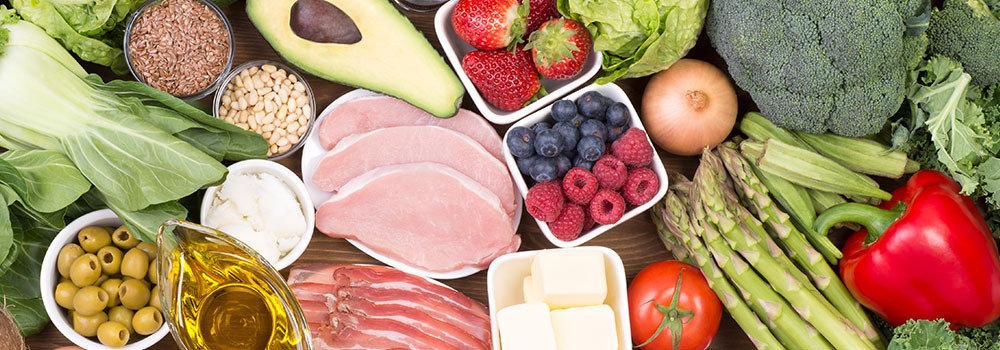This is a basic summary of a nutritional plan aimed at removing unnecessary high carbohydrate foods from your diet. To accomplish this, you will decrease the amounts of high carbohydrate processed foods and naturally high starch foods in your diet. Maintaining this diet will adjust your body’s metabolism so that it utilizes its natural fat stores for energy resulting in increased energy and weight loss.
What is the low carb diet? The low carb diet is a nutritional plan limiting total carbohydrate consumption to 20 grams or less per day. The goal of limiting carbs is to induce the natural state of ketosis (not to be confused with diabetic ketoacidosis) where the body burns fat instead of carbohydrates (sugars) for energy. Maintaining the body’s long term metabolism in ketosis is what leads to weight loss and ultimately achieving a healthy weight.
The benefits of going low carb are amazing : Weight loss (particularly reduction of abdominal fat), reduction of appetite, lowered blood triglyceride levels, reduced blood sugar and insulin levels, increased levels of HDL “good” cholesterol, reduced blood pressure, overall reduction and elimination of metabolic syndrome, increased energy.
So, what can you eat? Meats of any kind are unlimited such as beef, pork, lamb, fish, seafood. Eggs. Healthy fats and oils like butter (not margarine), Olive, peanut and coconut oils. Heavy creams great for sweetening coffees and teas. Vegetables in limited amounts (1 cup per day). Salad greens in limited amounts (2 cups per day)
What should you initially avoid: Fruits, beans, nuts and seeds. Some vegetables like potatoes, corn, peas, carrots. Grains (whole and bleached). All simple carbohydrates. Cornstarch. Milk and yogurt. Beer. Avoid foods with labels like “fat free” and “lite”, as they often contain added carbohydrates for improved flavor! Avoid over the counter medications with hidden added sugars to sweeten liquids such as cough syrup and cough drops. The foods mentioned here, may be added back in moderation as your body adjusts to the diet changes.
Labels! Reading nutritional labels is important when shopping. Net carb content = (g total carbohydrate) – (g fiber) – (g sugar alcohol). The total carbohydrate tells how many grams of carbohydrate are in one service. It includes the carbohydrate in fiber, sugars and sugar alcohols. Sugar alcohol does not elevate blood sugar and is subtracted from the total carbohydrate count.
Side effect management. As your body adjusts to the reduced amount of dietary carbs you may notice some mild side effects. Commonly dehydration and constipation occurs. Bullion often helps with dehydration since the added sodium will help to retain some fluid your body will initially lose. 1 tablespoon of Milk of Magnesia daily and eating high-fiber vegetables will help alleviate constipation as well. “Sour” breath is a normal side effect of ketosis. Often easily eliminated with normal oral hygiene and staying hydrated. Sugar cravings- will gradually diminish as your body adjusts to the diet over time. Sugar free snacks and desserts will help alleviate cravings; just be sure to always check NET carbohydrate content per serving.



